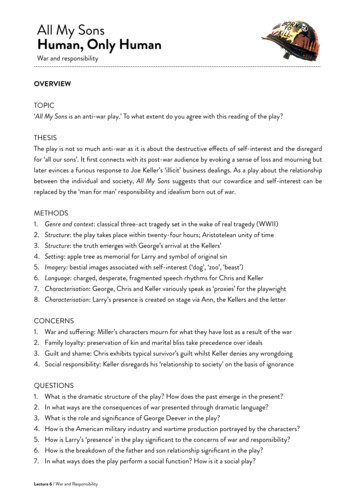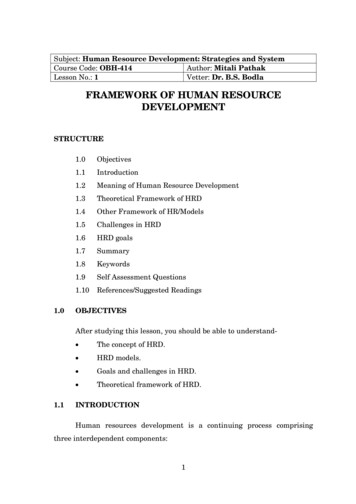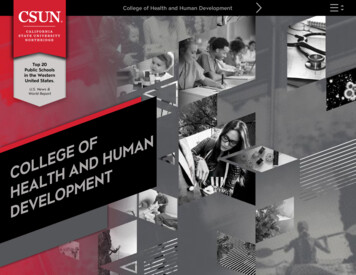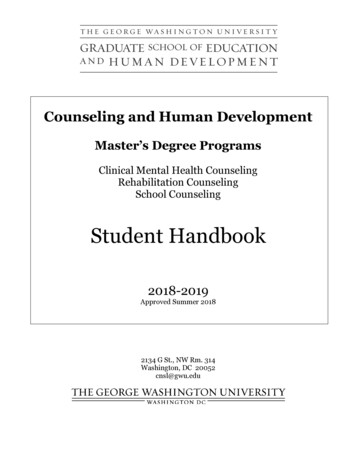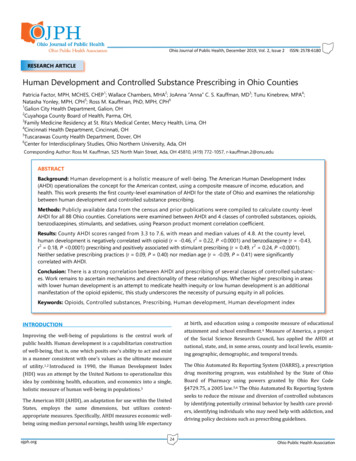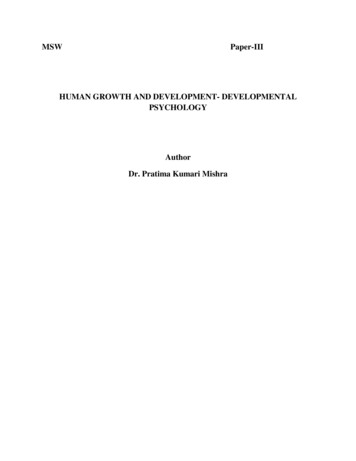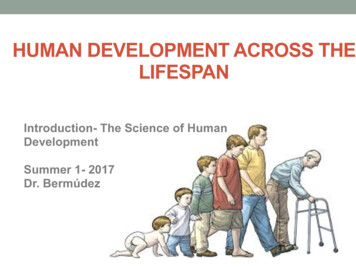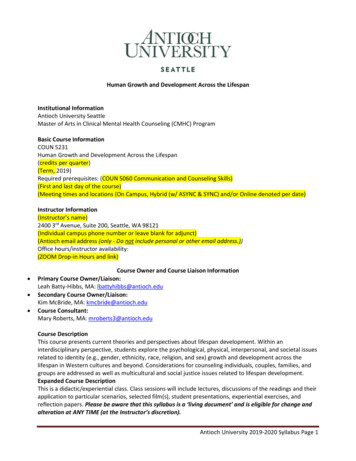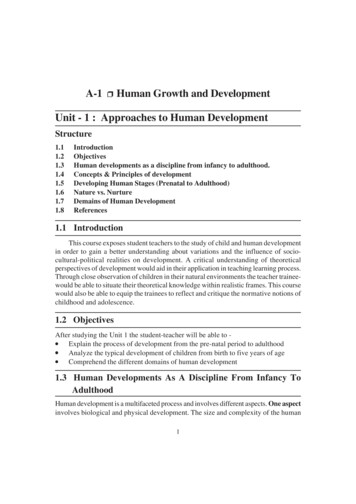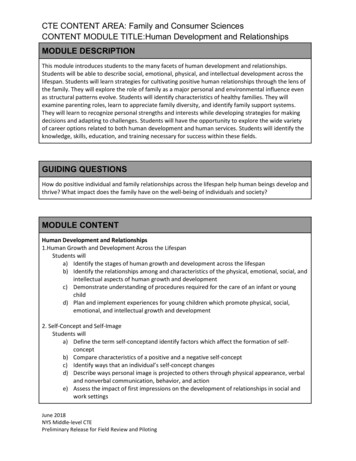
Transcription
INTRODUCTION TO HUMAN DEVELOPMENTInterest in human development is widespread largely because of curiosity about our beginningsand a desire to improve the quality of human life. The process by which a baby develops from asingle cell is miraculous and few events are more exciting than a human birth.Human development is a continuous process that begins when an ovum is fertilized by a sperm.Cell division, growth, differentiation, and even cell death, transform the fertilized ovum into amulticellular human being. Although important maturational changes continue to occur duringthe postnatal period (infancy, childhood, adolescence and even adulthood), the formation of theorgan systems occurs between fertilization and birth, the prenatal period. The goals of thiscourse are to introduce you to the principals of embryogenesis that are being utilized todiagnose, correct, and ultimately prevent congenital malformations and birth defects. Thecloning of the entire spectrum of human genes as well as the continuous development ofmolecular methods to prevent congenital malformations has revolutionized the entire field ofmodern embryology. The majority of these lectures will focus on the first eight weeks of life(known as the embryonic period) when the organ systems develop. Additional lectures willbriefly introduce fetal maturation, birth, and the neonate.GLOSSARY OF COMMONLY USED TERMS:Conceptus: Refers to the embryo and its extra-embryonic membranes, i.e. the products ofconception. It includes all structures that develop from the zygote, both embryonic andextraembryonic. Hence, the conceptus includes not only the embryo but also the placenta and itsassociated membranes.Congenital malformations (birth defects): structural, behavioral, functional, or metabolicdisorders present at birth.Embryo: This term refers to the developing human during the early stages of development. Theterm is usually not used until the 2nd week, when a bilaminar (two layered) embryonic disc isformed. The embryonic period extends until the end of the eighth week, by which time all majorstructures and organs have formed.Fetus: After the embryonic period, the developing human is called a fetus. The fetal period(ninth week to birth) is a period of maturation when many established organ systems developfurther. The developmental changes that take place during the fetal period are not as dramatic asthose that occur during the embryonic period, they are nevertheless very important.1
Morphogenesis: encompasses a cascade of complex, orderly sequenced interactions that resultsin the development of shape of an organ or body form.Neonate: The newborn; the neonatal period spans the period between birth and the end of the 4thpostnatal week.Organogenesis: all of the events required to establish an organ, organ system, or a major featureof the external body.Primordium: the first cells or tissues of an organ to develop, i.e., its earliest stage ofdevelopment. The term anlage has a similar meaning. For example, the primordium or anlage ofthe upper limb appears on about day 26 (E26).Teratogen: an environmental agent that has the capacity to cause abnormal development and birthdefects. Because the basic organs develop during the 4th and 5th embryonic weeks, exposure to ateratogen during that period can be particularly detrimental to normal development.Trimester: Obstetricians divide the nine calendar months, or period of gestation, into threemonth periods called trimesters (stages of intrauterine development). The critical period ofdevelopment occurs during the first trimester.Zygote: a diploid cell resulting from fertilization of an ovum (mature female germ cell) by asperm. A zygote is the beginning of a new human being.2
3
4
5
6
Interest in human development is widespread largely because of curiosity about our beginnings and a desire to improve the quality of human life. The process by which a baby develops from a single cell is miraculous and few events are more exciting than a human birth. Human development

